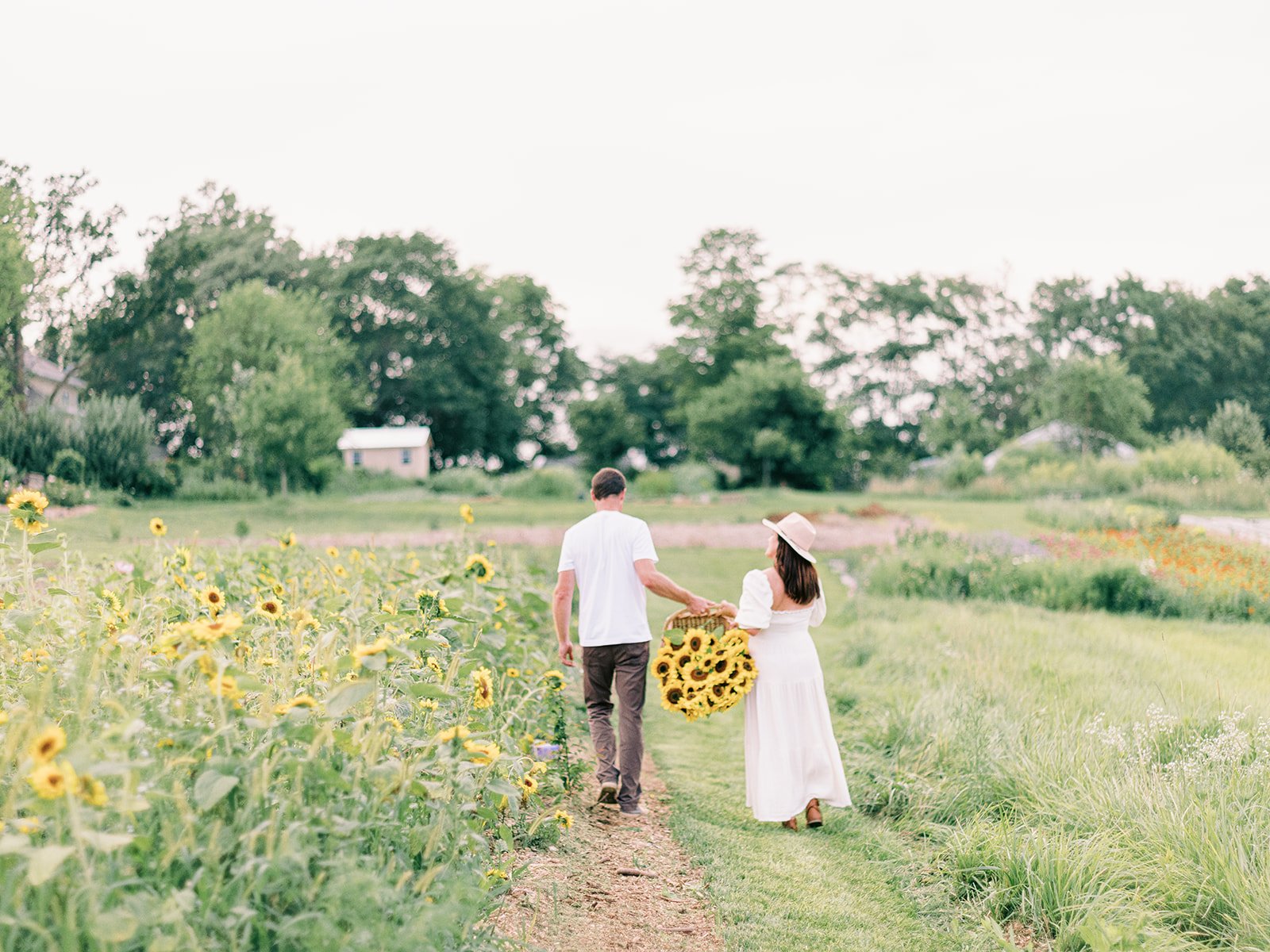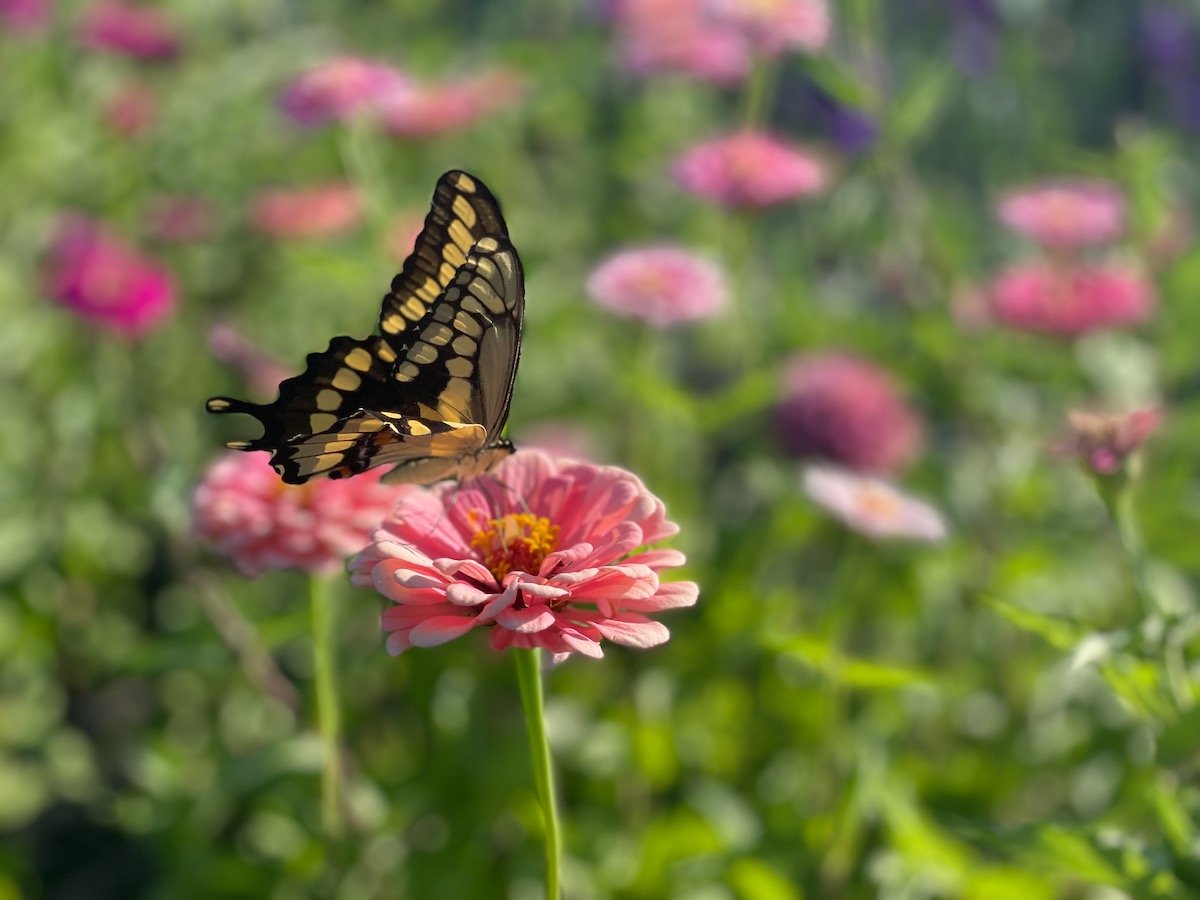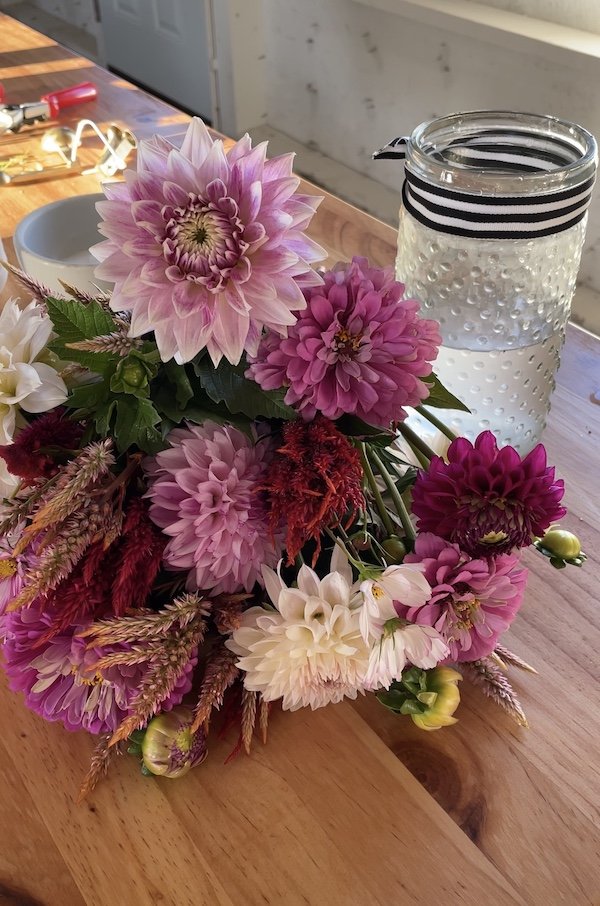
Spring Planning for the Flower Garden
Spring into action with our essential tips for a blooming flower garden! From choosing the right plants to easy-to-grow flowers, soil preparation, and smart watering, we've got you covered. Learn the art of deadheading, protect your garden from pests, and make the most of the spring sunshine. Follow these tips for a beautiful and thriving flower garden that will be the envy of your neighborhood. For more inspiration, check out our guest features on MarthaStewart.com and join us on Instagram and Facebook @pepperharrow_. Happy gardening!
Spring is the perfect time to start thinking about your flower garden. Whether you're an experienced gardener or just starting out, there are a few tips and tricks that can help ensure a successful, beautiful display, full of blooms all growing season long. Here are some spring flower garden tips to help you get started with a beautiful flower garden:
Choose the Right Plants: When selecting plants for your garden, it's important to choose ones that are well-suited for your climate and soil type. You can consult with your local nursery or gardening center for recommendations on plants that thrive in your area. Check out our flower, shrub, tree, and ground cover suggestions for each growing zone in our guest contribution for MarthaStewart.com. You can access it here!
Choose Easy to Grow Flowers: We love growing easy to grow flowers, because they give us high impact color and blooms for very little effort. These are also great to look at when you first start a grade, because they’ll help you to build confidence as you grow! Here’s some great ideas via our guest feature in MarthaStewart.com for 12 Easy Annuals for Beginner Gardeners.
Prepare the Soil: Before planting, make sure to prepare the soil by adding compost or other organic matter to improve its texture and nutrient content. This will help your plants grow strong and healthy.
Water Wisely: It's important to water your plants regularly, but be careful not to overwater them. Too much water can lead to root rot and other issues. Check the soil moisture regularly and water as needed.
Provide Enough Sunlight: Most flowering plants require plenty of sunlight to thrive. Make sure to choose a spot in your garden that gets plenty of sunlight throughout the day. We recommend at least 6 hours of sun each day for a plant that requires full sun, part sun or also shade. For shade plants, they just really don’t like a lot of intense sun, dappled is best!
Deadhead Regularly: To encourage your plants to produce more blooms, it's important to deadhead them regularly. This involves removing spent flowers from the plant to promote new growth.
Protect from Pests: Unfortunately, pests and insects can be a problem in any garden. To protect your plants, consider using natural remedies like neem oil or companion planting with herbs like basil and mint, which can repel pests.
We hope these tips help you create a beautiful and thriving spring flower garden! If you need more flower garden inspiration, follow along with us on Instagram via pepperharrow_ or on Facebook: PepperHarrow. And let us know if you have any questions, by commenting below!
XX Jenn and Adam
Best Care Tips for Fresh Flowers
Discover our best tips for extending the vase life of your fresh cut flower bouquet. Whether you purchased flowers in water or transported a wrapped bouquet, these care tips will keep your blooms vibrant. From preparing your vase with a sugar and bleach mixture to removing foliage and trimming stems, follow our advice for beautiful, long-lasting fresh flowers. Change the water every two days, re-trim the stems, and enjoy your flowers for an extended period—typically lasting between 7-10 days.
Best Care Tips for Fresh Flowers
After a successful weekend at farmer’s market, design classes and hosting a Bloom Bar at our flower farm, there was one question from everyone that kept coming up: What’s the best way to keep our flowers looking fresh?
After 11 years of growing and selling cut flowers locally, we have some great tips to share to help extend the vase life on your fresh cut flower bouquet and we’re going to share those with y’all!
The first thing to consider is: did you purchase your flowers already in water, or was it a wrapped bouquet that you transported home out of water?
If you purchased flowers already in water, it’s okay to not fuss too much with them when you first get them home. The key will be to maintenance them each day afterwards, which we’ll discuss below.
On the other hand, if your bouquet was purchased and you had it out of water to transport home, such as a wrapped bouquet, before you place it in your water you’ll want to trim the bottom of your stems before putting it into your vase of water.
Prepare Vase
Anytime you remove your flower stems from the water, pockets of air get into the stems. To remove the little air pockets, you’ll just want to trim a small amount from the bottom of the stems before adding your flowers into your vase of water.
Make sure your vase has been washed out thoroughly with soap and water before you use it for your fresh flowers. Keeping all of your supplies clean for your fresh flowers will go a long way to helping your fresh flowers stay beautiful longer. This includes the floral snips, or scissors you use to snip your stems.
Add Sugar & Bleach
Add 1 tsp of sugar and 1 tsp of bleach to your clean water
We’ve found that the sugar & bleach mixture works well in helping extend vase life for fresh blooms. The sugar gives your flowers something to eat and the bleach keeps the water clean. The perfect combination for fresh flowers!
The amount of each of these will vary depending on the size of the vase you use. Shown here is a 32 oz vase, hence the 1:1 ratio for the tsp. If you use half this size of vase, cut this amount in half.
Remove Foliage
Remove any leaves/foliage from the bottom of the stems - any foliage that will touch the water.
Removing foliage from the bottom of your stems, anything that will touch the water, will make sure your flowers stay beautifully for days. If any foliage gets into the water, it will start to break down and cause rot and bacteria. This makes the water ‘dirty’ and will shorten the vase life for your fresh flowers.
Taking a small amount of extra time to remove all foliage that will touch the water, before you place your fresh flowers into your vase of water, will ensure success in extending the vase life for your fresh blooms.
Trim Stems
Anytime you remove your flower stems from the water, pockets of air get into the stems. To remove the little air pockets, you’ll just want to trim a small amount from the bottom of the stems before adding your flowers into your vase of water.
After following all of the above steps, finish up by placing your fresh flowers in your vase.
Be sure to change the water every two days, following the above directions, especially re-trimming the bottom of the stems before you place them back into the water.
Vase life for your fresh flowers can vary depending on the type of flower in the bouquet; however, you can typically expect your fresh flowers to last between 7-10 days.








